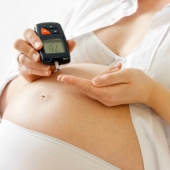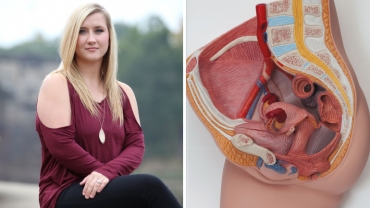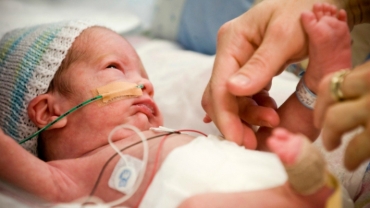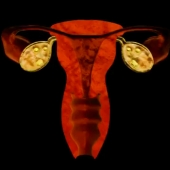What's happening when you're 33 weeks pregnant? It’s week 33 and as your watermelon-sized belly is likely to attest, your baby has come a long way from his poppy seed size status. He seems like a relative heavy weight at four and a half pounds, but remember, he could double that weight in the coming weeks. Happily he won’t be doubling his height. At around 17 to 19 inches long, your baby is pretty close to the length he’ll be at birth.
What’s going on in that uterine nursery? Well, your fetus is starting to react remarkably like the infant he’ll become. Sensitive to the light that penetrates through your now thinner abdominal walls, drowsy eyes drift shut to sleep when it’s dark and flicker open when it’s light. These are your dozing darling’s first lessons in learning the difference between night and day, a distinction that’s obviously important once he’s outside the womb.
Still playing a crucial role is the amniotic fluid that surrounds your floating baby. It’s around one degree warmer than your body temperature, so it serves to keep your baby toasty and warm until the big day. Until now, there was more amniotic fluid than actual baby in your womb, a ratio that created a cushion between you and your little boxer.
But now, amniotic fluid levels have topped out and your baby’s taking up more room in the uterus. The result? There’s less elbowroom for baby and less of a cushion for mama, meaning those left hooks and karate kicks will be more uncomfortable for you.
Though your little one may be able to throw a mean jab, he’s not quite ready for a prime time bout. His body is still busy developing its independent immune system, thanks in large part to the antibodies you’re passing along through the placenta.
Did You Know?
During birth, there is a chance you will have to have an episiotomy (an incision in the perineum) if: 1) your child isn't tolerating the end phases of labor, 2) your baby is very large, or 3) your vaginal tissue is starting to tear and bleed in multiple places. Regularly massaging the perineum for five to six weeks before birth decreases the risk you'll have to have one.
- 155 views













